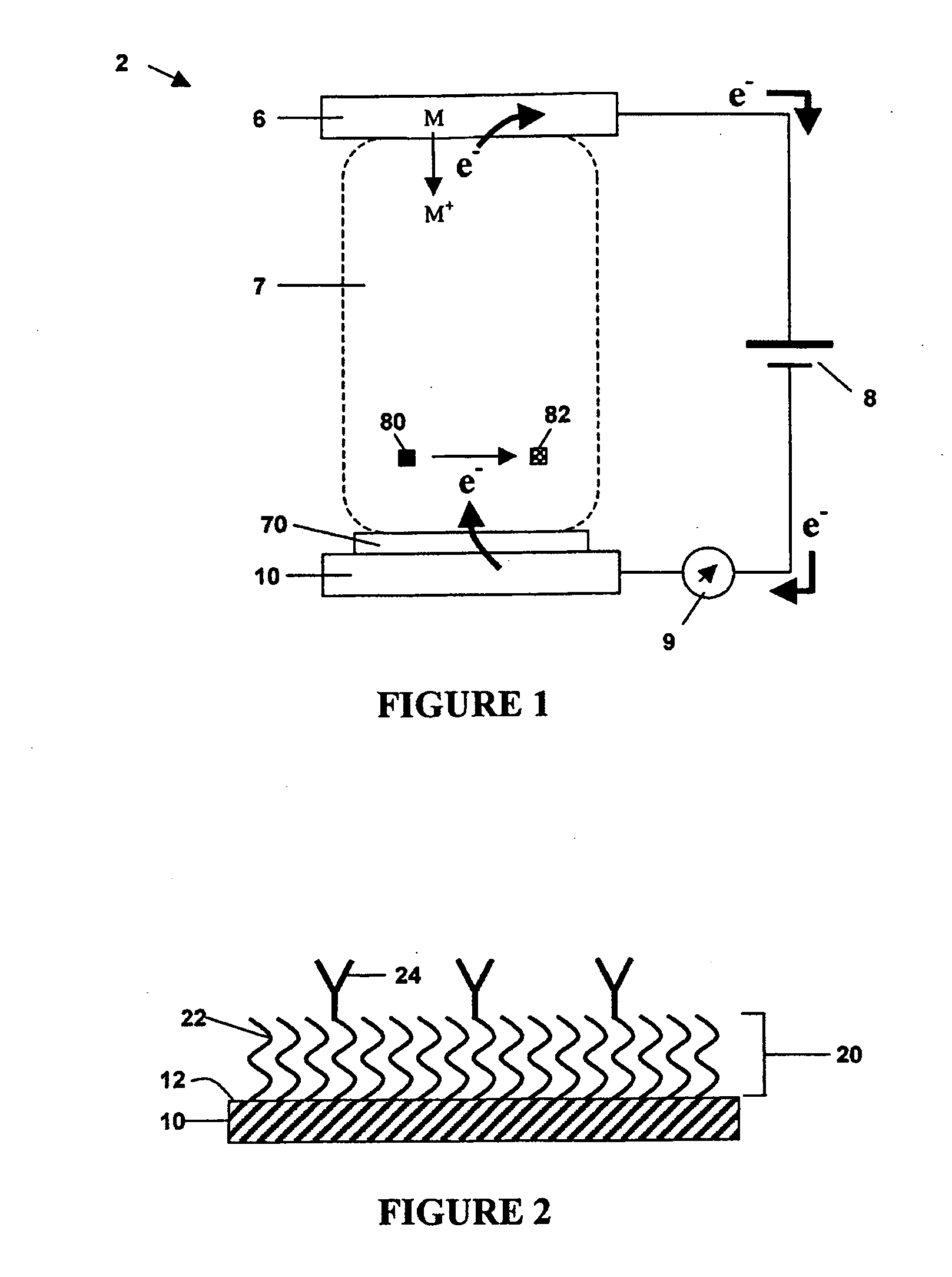Enzymatic electrochemical detection assay using protective monolayer and device therefor
a protective monolayer and electrochemical detection technology, applied in the direction of liquid/fluent solid measurement, material electrochemical variables, instruments, etc., can solve the problems of incorrectly low measurement of analyte concentration, add to the complexity of the assay, and the assay is not very sensitive, so as to inhibit the non-specific binding of protein molecules
- Summary
- Abstract
- Description
- Claims
- Application Information
AI Technical Summary
Problems solved by technology
Method used
Image
Examples
examples
[0086] The above method was performed to detect the venom protein β-BuTx from Bungarus multicinctus using a charged protective monolayer of mercaptoundecanoic acid self-assembled on a gold electrode via thiol chemistry. The capture molecule used was a monoclonal antibody directed towards venom from Bungarus multicinctus, which was crosslinked to the free carboxyl group of the monolayer using EDC / NHS crosslinking methods. The remaining electrode surface not covered by analyte layer was blocked using bovine serum albumin. The venom protein, in either PBS or in serum, was captured and then recognized with a second anti-Bungarus multicinctus venom antibody conjugated to biotin. Avidin-conjugated horseradish peroxidase (“A-HRP”) was added to complete the formation of the analyte layer. Polyvinylpyridine-co-acrylamide complexed with Os(4,4′-dimethyl-2,2′-bipyridine)2Cl+ / 2+ was added as redox polymer, and current was measured in a solution of 5 mM hydrogen peroxide. As little as 2 fg and 1...
PUM
| Property | Measurement | Unit |
|---|---|---|
| concentrations | aaaaa | aaaaa |
| volumes | aaaaa | aaaaa |
| pH | aaaaa | aaaaa |
Abstract
Description
Claims
Application Information
 Login to View More
Login to View More - R&D
- Intellectual Property
- Life Sciences
- Materials
- Tech Scout
- Unparalleled Data Quality
- Higher Quality Content
- 60% Fewer Hallucinations
Browse by: Latest US Patents, China's latest patents, Technical Efficacy Thesaurus, Application Domain, Technology Topic, Popular Technical Reports.
© 2025 PatSnap. All rights reserved.Legal|Privacy policy|Modern Slavery Act Transparency Statement|Sitemap|About US| Contact US: help@patsnap.com



